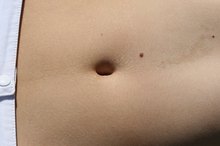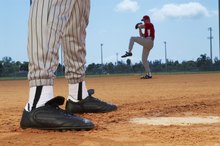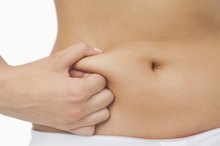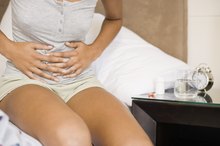Pulled Abdominal Muscle or a Hernia?
Pain in your abdomen can be caused by many things, including a pulled muscle or hernia. Both conditions may cause pain that increases with activity and subsides with rest.
However, there are several factors that can help distinguish a hernia from a pulled abdominal muscle, including the mechanism of injury, appearance, location and nature of the pain, and other symptoms. See your doctor for an accurate diagnosis and treatment of any explained abdominal wall pain or lumps.
Mechanism of Injury
A pulled abdominal muscle involves a mild to severe tear of one of the abdominal wall muscles.
These injuries, known as abdominal muscle strains, typically occur suddenly during high-energy sports movements, such as batting, throwing, serving a tennis ball or spiking a volleyball. The muscles are first stretched then forcefully contracted during these movements, making them vulnerable to tearing.
An abdominal hernia describes an opening in the abdominal wall that allows abdominal organs to protrude through the wall. Some abdominal hernias are present at birth while others develop later in life. Increased pressure within the abdomen due to pregnancy, obesity, frequent heavy lifting, or straining to pass stool or urine may contribute to the development of an abdominal hernia. Weakness at the site of prior abdominal surgery can also sometimes lead to development of an abdominal hernia.
- A pulled abdominal muscle involves a mild to severe tear of one of the abdominal wall muscles.
- Increased pressure within the abdomen due to pregnancy, obesity, frequent heavy lifting, or straining to pass stool or urine may contribute to the development of an abdominal hernia.
Appearance
Signs & Symptoms of a Pulled Abdominal Muscle
Learn More
The appearance of the abdomen may help distinguish between a pulled muscle and a hernia.
Mild to moderate abdominal muscle strains typically cause no noticeable changes to the appearance of the abdomen. Severe muscle strains, however, may cause swelling and bruising over the injured area.
Hernias commonly cause a distinct bulge on the surface of the abdomen without associated swelling or bruising. The bulge is usually small initially but often increases in size over months to years as the defect in the abdominal wall enlarges. Pressing on a small hernia bulge often causes it to disappear when the abdominal contents are pushed back into the abdominal cavity. Hernia bulges may also disappear when lying down for a similar reason. With larger hernias, the bulge may remain regardless of pushing on it or body position.
- The appearance of the abdomen may help distinguish between a pulled muscle and a hernia.
- Pressing on a small hernia bulge often causes it to disappear when the abdominal contents are pushed back into the abdominal cavity.
Pain
A pulled abdominal muscle typically causes sudden, sharp pain at the time of the injury. The pain is usually aggravated by coughing, laughing, sneezing, deep breathing, and moving in ways that stretch the injured muscle. The pain is typically localized to the specific site of the muscle injury, which is often tender if pressed on. Pain caused by an abdominal muscle strain gradually decreases as the injury heals over days to weeks.
Abdominal hernias generally don't cause pain initially.
As they grow, however, they are more likely to cause vague pain that is often described as diffuse achiness or heaviness. The pain may increase with heavy lifting or standing for long periods. The bulge is typically not tender unless the abdominal contents are trapped in the hernia. Sudden tenderness in a hernia bulge requires immediate medical evaluation.
- A pulled abdominal muscle typically causes sudden, sharp pain at the time of the injury.
- The pain is typically localized to the specific site of the muscle injury, which is often tender if pressed on.
Location
Hernia Signs and Symptoms in a Male
Learn More
Abdominal muscle strains occur in a variety of locations and can involve any of the muscles of the abdominal wall. Tears most often occur at the ends of muscles, where they attach to connective tissues. In people with muscular abs, areas near the "lines" of the abdomen are common sites of muscle strains.
Abdominal hernias typically occur at specific sites.
Roughly 75 percent of hernias occur in the groin. Other common sites include the area around the belly button, or umbilicus, and sites of previous surgical incisions or other penetrating abdominal wounds.
- Abdominal muscle strains occur in a variety of locations and can involve any of the muscles of the abdominal wall.
- Other common sites include the area around the belly button, or umbilicus, and sites of previous surgical incisions or other penetrating abdominal wounds.
Warnings and Precautions
A mild to moderate pulled abdominal muscle will usually heal with rest, followed by physical therapy.
Severe abdominal strains that cause a through-and-through muscle tear, however, require immediate medical attention as they can involve significant internal bleeding. Signs and symptoms of a serious abdominal muscle tear include: -- immediate, severe pain -- nausea and vomiting -- pale skin, cold sweats, dizziness or fainting
Hernias can cause serious complications, including bowel obstruction or death of a portion of the bowel that gets trapped in the hernia sac and loses its blood supply --a condition known as a strangulated hernia. Both of these situations require immediate medical attention. Warning signs and symptoms may include: -- new hernia tenderness and swelling -- pain that progresses to a severe level -- nausea and vomiting -- not passing stool or gas -- abdominal bloating and pain -- fever, pale skin, cold sweats, dizziness or fainting
Reviewed by: Tina M. St. John, M.D.
- A mild to moderate pulled abdominal muscle will usually heal with rest, followed by physical therapy.
- Severe abdominal strains that cause a through-and-through muscle tear, however, require immediate medical attention as they can involve significant internal bleeding.
Related Articles
References
- University of Tennessee, Graduate School of Medicine: The Abdominal Wall and Hernias
- Aspetar Sports Medicine Journal: Clinical Practice Guide for Muscular Injuries -- Epidemiology, Diagnosis, Treatment and Prevention
- Open Access Journal of Sports Medicine: Rectus Abdominis Muscle Injuries in Elite Handball Players -- Management and Rehabilitation
- British Journal of Sports Medicine: Rectus Abdominis Muscle Strains in Tennis Players
- Merck Manual Professional Version: Hernias of the Abdominal Wall
- Clinical Guide to Sports Injuries; Roald Bahr and Sverre Mæhlum
- American Family Physician: Inguinal Hernias: Diagnosis and Management
- American Family Physician: The Abdominal Wall: An Overlooked Source of Pain
- American Academy of Orthopaedic Surgeons, OrthoInfo, "Diseases and Conditions: Muscle Contusion (Bruise)"
- Dines JS, Bedi A, Williams PN, Dodson CC, Ellenbecker TS, Altchek DW, Windler G, Dines DM. Tennis injuries: epidemiology, pathophysiology, and treatment. Journal of the American Academy of Orthopaedic Surgeons. 2015;23(3):181-9.
Writer Bio
Aubrey Bailey has been writing health-related articles since 2009. Her articles have appeared in ADVANCE for Physical Therapy & Rehab Medicine. She holds a Bachelor of Science in physical therapy and Bachelor of Arts in psychology from the University at Buffalo, as well as a post-professional Doctor of Physical Therapy from Utica College. Dr. Bailey is also a certified hand therapist.









